Of the myriad threats currently facing native trout, few if any are more deadly than non-native fish which were flung around the national waterscape like confetti back in the days when genetics and native ecosystems were irrelevant to managers and anglers.
For example, in the Great Basin and Rocky Mountains, non-native rainbow trout indigenous to the Pacific northwest are rapidly hybridizing cutthroat trout into oblivion. Of the 14 subspecies of cutthroats recognized in 2002 by Dr. Robert Behnke (1929-2013), then considered the world’s leading authority on salmonids, all are vastly diminished, and two — the yellowfin and Alvord — are considered extinct.
But the State of Montana, the U.S. Forest Service and the U.S. Fish and Wildlife Service now have a rare opportunity to save westslope and Yellowstone cutthroats (both endangered in fact if not by federal decree).
In Montana’s Blackfoot River watershed creation of a genetic and thermal refuge would go a long way toward preventing the impending extinction of the westslope cutthroat, eliminated from 97 percent of its historic range.
The planned project would include three lakes and 67 miles of stream that feed the North Fork of the Blackfoot River. Hybrids of Rainbow trout, westslope cutthroat and Yellowstone cutthroat currently infesting the watershed would be removed with the organic piscicide rotenone; then pure westslopes would be stocked for three years. A 50-foot waterfall would prevent future infestation. In some spawning habitats below the falls pure westslopes persist. So the project would also conserve natives downstream by eliminating the hybrid influx.

In the greater Yellowstone ecosystem, the Buffalo Creek project would create another desperately needed genetic and thermal refuge — this one for vanishing Yellowstone cutthroats. It would consist of one lake and 47 miles of stream, all cleared with rotenone of rainbows and rainbow/Yellowstone cutthroat hybrids, then stocked with pure Yellowstone cutts. The project would help preserve the Lamar system — the biggest, best, and one of the last refuges for Yellowstone cutts.
Rotenone is by far the most effective tool and usually the only tool for preventing native fish from being hybridized or competed off the planet. Shortly before his death Behnke told me this: “Without rotenone, restoration of native fish is essentially impossible.”
Fisheries managers apply rotenone to running water at 25 to 50 parts per billion. Rotenone’s half-life can be less than one hour, and it’s easily neutralized below project areas with the equally short-lived oxidizer potassium permanganate. In modern fisheries management rotenone has never been seen to permanently affect a native aquatic ecosystem except to restore it.

Rotenone is feared and loathed by a large component of the environmental community, not because members and staffers have bothered to learn anything about it, only because it’s a poison. “Poison has no place in … wilderness,” proclaims Wilderness Watch. But the Wilderness Act provides for precisely such stewardship (with piscicides, insecticides and herbicides) when aliens threaten natives.
Virtually all rotenone opponents imagine that angler amusement is the sole motive for intervention by state and federal resource agencies in the ongoing extinction and extirpation of native fish. This, for example, is how Wilderness Watch dismisses Gila trout recovery, mandated by the Endangered Species Act and in which some 100 miles of alien-infested stream habitat have been successfully reclaimed with rotenone: “It is both sad and ironic that it was Aldo Leopold who convinced the Forest Service to protect the Gila [National Forest] as our nation's first wilderness in the 1930s — now, it is in danger of being converted to a fish farm for recreationists.”
Rotenone has proven safe and effective in saving and/or restoring populations of desert pupfish, Gila topminnows, Yellowstone cutthroats, westslope cutthroats, greenback cutthroats, Bonneville cutthroats, Lahontan cutthroats, Colorado River cutthroats, fluvial Arctic grayling, Maine's landlocked Arctic char, Apache trout, golden trout, redband trout and brook trout, to mention just a few.
On July 22, 2021 Wilderness Watch, Alliance for the Wild Rockies, Friends of the Wild Swan, the Flathead-Lolo-Bitterroot Citizen Task Force, and the Conservation Congress sued to block the North Fork of the Blackfoot River project.
They cite initial confusion between greenback and Colorado River cutts as evidence that managers are clueless about trout genetics and should stand aside and let hybrid swarms do their thing. But greenback and Colorado River cutts were isolated from each other only recently in geologic time and therefore share many morphological and genetic characteristics, rendering initial confusion by Behnke and others completely understandable. Westslope and Yellowstone cutts, on the other hand, have been separated for at least two million years. Currently they’re classified as cutthroat subspecies, but they’re better thought of as two species; and that re-classification is pending.
The plaintiffs also argue that the project area was naturally fishless before rainbow trout were stocked (no one knows by who), an assertion that may be untrue and in any case is irrelevant. This from recreation and access bureau chief Don Skaar of Montana Fish, Wildlife and Parks: “We just don’t have records about fish that may or may not have been present. On either side of the Blackfoot there are westslope cutthroats above natural barriers. That’s our basis for saying it’s possible they were above the falls.”
But even if the watershed was originally fishless, there’s every reason to support the project. It would provide an enormous westslope cutthroat sanctuary and, in the future, for federally threatened bull trout as well.
“Opponents don’t like wilderness being used as a Noah’s Ark,” remarks Skaar. “As a manager I love that idea.” He cites the ten-year South Fork Flathead project (completed in 2017) that saved the last stronghold of westslope cutthroat trout in Montana.
In that project, the biggest and most successful native-fish recovery effort in history, Fish, Wildlife and Parks eliminated a huge infestation of rainbows and hybrids from originally fishless water in the Bob Marshall Wilderness. It then introduced pure westslopes which are now thriving. The project had nothing to do with fishing opportunity, though westslopes do better and grow bigger than rainbows and hybrids because they’re better adapted to high elevations and cold water. The goal, now attained, was preventing alien genes from dribbling downstream and polluting the South Fork’s westslope gene pool.
Fifteen lakes were treated with rotenone. But such was the opposition to the South Fork project by Wilderness Watch and others that in six other lakes, instead of using rotenone, Fish, Wildlife and Parks agreed to long-term swamping of hybrid genes with massive injections of pure westslopes. In the other lakes this didn’t work, and there’s no guarantee that it will work in these six.
Protecting and restoring native ecosystems and, within reason, allowing natural processes to proceed uninhibited is the mission of the National Park Service. If it fails to protect and restore native trout, it violates federal law. In 1916 Congress passed the service’s Organic Act, requiring the new agency to “conserve the scenery and the natural and historic objects and wildlife” of all units “leave[ing] them unimpaired.” So the Park Service has partnered with the U.S. Forest Service and Fish, Wildlife and Parks in the Buffalo Creek Project.
In 1935, rainbow trout were unleashed in Hidden Lake. From there they quickly infested the upper watershed and flushed downstream into Buffalo Creek, Slough Creek and the Lamar River.
“We’ve been watching the Yellowstone cutthroat population decline in terms of genetic integrity,” says Dr. Todd Koel, leader of the park’s native fish conservation program. “We need to curtail the hybrid invasion. So far, we’ve been able to hold our own by removing rainbows and hybrids from lower Slough Creek and the Lamar via electrofishing and a must-kill regulation for any fish with white edges on fin tips or other obvious rainbow characteristics. Originally some anglers were concerned that this would harm the fishery. That absolutely hasn’t happened.


“In spring the big migratory cutthroats move from the lower Lamar Valley up into the headwaters in the remote backcountry to spawn, then in summer and winter they return to the lower river. Hybrids and rainbows do the opposite; they’re mostly concentrated downstream in the Lamar Canyon and lower river. So for now we have this separation. But if we were to let everything go, we’d lose the entire Lamar system and end up with what’s happened in the north forks of the Flathead and Shoshone and every other large system around here — just big hybrid swarms.”
That’s fine and dandy with Wilderness Watch and even some angling groups like Walleyes Unlimited, which is still sulking about Montana’s refusal to list walleyes, alien to the state, as “native” and its ongoing effort to limit walleye numbers where they’re chowing down on wild trout outside the park.
Prolific and vociferous opposition to the Buffalo Creek project resulted in a bill to require that Montana consider replacing “lost fishing opportunity” resulting from fish-removal projects (most likely by stocking nonnatives elsewhere). Fortunately, the bill failed. But it frightened Montana Fish, Wildlife and Parks into requiring that the lay-populated Montana Fish and Wildlife Commission (not trained fisheries professionals) pass judgement on all such alien-fish removal projects.
The quantity of misinformation and disinformation originating from opponents of native-trout recovery is stunning. Consider Michael Garrity’s op-ed, picked up by newspapers around the West. Garrity is executive director of Alliance for the Wild Rockies, one of the litigants attempting to scuttle the Blackfoot project. Rotenone, he averred, “severely alters biodiversity and causes a broad loss of taxa and species from the aquatic ecosystem.”
It does no such thing. Most gilled taxa are unaffected, and the rest quickly recover, often doing better than when they had to contend with alien predators. Most invertebrates survive either in substrate or by dislodging when they sense rotenone and escaping with the current. Caddis larvae routinely feast on rotenone-killed fish minutes after treatment. Any aquatic insect mortality is quickly compensated by adults flying in from outside treatment areas.
Garrity went on to suggest that rotenone used in fisheries management poisons wells. It doesn’t and can’t; and if it did, it wouldn’t affect humans.
“Potassium permanganate,” continued Garrity, “targets human organs including the respiratory and central nervous system, blood, kidneys, and can cause nausea, vomiting, gastrointestinal irritation and burns to the mouth and throat if ingested.”
He appears to have taken that directly from a study entitled “Suicidal Ingestion of Potassium Permanganate.” A 22-year-old woman experienced the symptoms Garrity describes after she attempted suicide by swallowing 2,500 milligrams of pure potassium permanganate, a popular disinfectant readily available over the counter and online. Her attempt failed.
Every time Garrity perches on a flush toilet he helps contribute billions of times more potassium permanganate to surface waters than all native-fish recovery projects combined. Massive doses of the chemical are used by wastewater treatment plants to kill bacteria.
Garrity’s screed drew the ire of professional biologists. The American Fisheries Society, for example, condemned it as “false and inflammatory.”
One such professional, Montana fisheries biologist Mike Ruggles, offers this: “Our target for potassium permanganate is three parts per million of river volume. It degrades quickly. Within 30 minutes we’re usually left with only one PPM because it gets eaten by the vegetation and substrate.” After potassium permanganate neutralizes rotenone by removing an electron there’s no trace of either chemical.
Providing free counsel to Wilderness Watch and other opponents of rotenone in a 2011 lawsuit that temporarily blocked Paiute cutthroat recovery was the Western Environmental Law Center (WELC). It fired off an error-filled press release, wrongly attributed to case attorney Peter Frost, claiming that rotenone “does not just kill the fish in the water but the entire ecosystem, including turtles, snakes, frogs, birds, terrestrials, insects and other animals that live in or drink from the poisoned water.” Rotenone applied by fisheries managers cannot harm any organism, terrestrial or aquatic, that respires with lungs. WELC stood by the release's claims in 2014. But after I discussed the matter with Frost following the initial publication of this article, the Center, to its credit, acknowledged the inaccuracies of the 2011 release, retracted it, and corrected the record.
In its effort to block the Blackfoot and Buffalo Creek projects Wilderness Watch has been overwhelming inboxes with untruths such as its contention that the Forest Service’s July 15th authorization of helicopters and gasoline-powered boats is a “blatant violation of the Wilderness Act.” The Wilderness Act provides for just such motorized use where project areas are otherwise inaccessible. Permits are routinely granted to resource agencies.
When environmental consultant Bruce Farling was directing Montana Trout Unlimited he condemned what he called “knee-jerk opponents to native-fish restoration.” Speaking for TU, he told me this: “It strikes me as extremely contradictory for a group like Wilderness Watch, which purports to fight for wilderness purity, to actively oppose conservation of native fish just because it means using human technology temporarily in designated wilderness — which has been ‘created’ by Congress but which is meaningless to a cutthroat trout that has evolved over of millions of years with a genetic code that helps it survive fire, earthquakes, floods and hungry ospreys.”
In its public commentary on the Buffalo Creek Project’s Environmental Assessment Wilderness Watch wrote: “The EA omits any mention of other fish species (for example, sculpins, whitefish, or brook trout) in the project area.” Had its perusal of the EA been less casual, it would understand the reason for this omission — there are no native fish species in the project area.
Wilderness Watch further complained that “total eradication of rainbow trout” in Hidden Lake would “destroy the food base for fish-eating birds.” Had its perusal of the EA been less casual, it would understand that the brief fishless period would happen after the birds migrate south. With spring stocking of large Yellowstone cutts the food base would be restored before the birds return.
The Blackfoot and Buffalo Creek projects are not without the backing of enlightened anglers and environmental groups. Among these are the Magic City Fly Fishers, which wrote Fish, Wildlife and Parks as follows: “It is our belief that without these projects, the long-term quality of this popular local sport, as well as attractiveness to out-of-state visitors, will be significantly diminished. Thank you for your hard work in supporting high-quality fishing recreational opportunities in Montana.”

And, as with all native-fish recovery, Trout Unlimited and the National Wildlife Federation have been stalwart supporters and sources of public education.
Still, voices of enlightenment are being outshouted by voices of ignorance and superstition. Fish are furless, featherless, cold, slimy, silent and, for most people, unseen. So for a large element of the environmental community (and much of the general public) fish, including icons of wilderness like cutthroat trout, don’t count as wildlife.
Whether the ongoing demise of cutthroat trout can be slowed or reversed by fisheries managers and native-fish advocates depends on their ability to educate the public to the fact that cutthroats are national treasures as priceless as, say grizzly bears and bald eagles. So far their educational effort has been a spectacular failure.
Because of all the controversy generated by opponents the partners have postponed the Blackfoot and Buffalo Creek projects for at least a year. And by no means is it certain that they’ll ever happen.
This text was updated to reflect corrections issued by the Western Environmental Law Center following the initial publication of this article and to more accurately convey the Center's historical and current involvement in the rotenone debate.





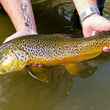




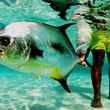









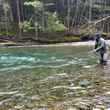
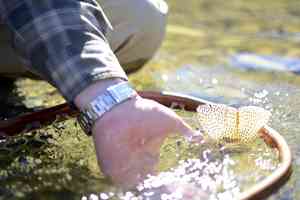
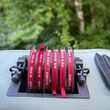


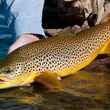

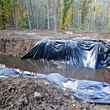
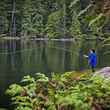
Comments
Sisyphus replied on Permalink
Thanks for a well-researched accounting of the need for rotenone and description of the malfeasance of those whose willful ignorance of fish conservation is stunning - and harmful.
Toner Mitchell replied on Permalink
Alliance for the Wild Rockies is apparently doing this in Wyoming too, fighting a Snake River cutthroat recovery. They claim to promote biodiversity and seem to favor bull trout recovery in Idaho. Wouldn't be surprised if pictures of pretty cutthroats are used in their fundraising materials.
Andrew Kenefick replied on Permalink
Great article!! Thank you for the very great advocacy detail.
Frank DeCarlo replied on Permalink
Killing fish is still against my DNA. I know it may be in the best interest of the cutts whom I truly love but the top of Soda Butte was devasted and sucks to this day due to the use of retenone. There has to be a better way.
Edward Williams replied on Permalink
Rotenone is the ONLY way save on tiny streams where electrofishing works and small ponds that can be drained. I have not fished Soda Butte for a few years, but I have recent reports that it's fishing great.
Toner Mitchell replied on Permalink
The thing about electrofishing in small creeks is you need to return for frequent maintenance removals, often in rough country, requiring agency approvals that are difficult to get. Multiply that by the number of creeks you need to work on. In NM, it's relatively easy but still a huge lift; I can't imagine what electrofishing only would look like in states with more water. The environmentalist speedbump orgs are kidding themselves and betraying the rest of us. Until chromosome manipulation technology is available for widespread use on brookies, browns, and rainbows, Rotenone is it.
Sisyphus replied on Permalink
Where do you get your information on Soda Butte Creek? I fish it all the time and have pulled 20 inch cutties from the area they treated on epic days of many fish. I've also talked to the biologists. They have data that do not meet my definition of sucks. Lots of fish, all size classes, and a abundance of dang big 'uns.
Sisyphus replied on Permalink
Looks like Ted got the long awaited retraction from the Western Environmental Law Center. Perhaps science can beat out hysteria after all. "
https://urldefense.com/v3/__https://westernlaw.org/correcting-record-rot...$
Pages